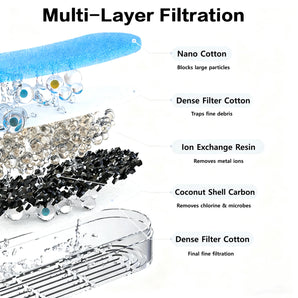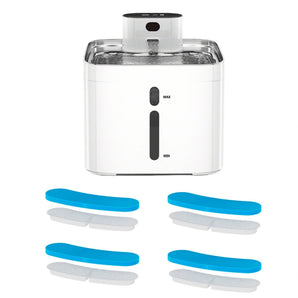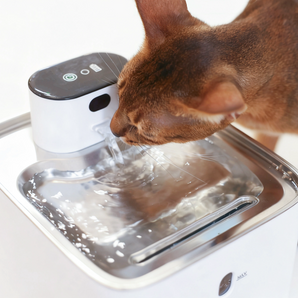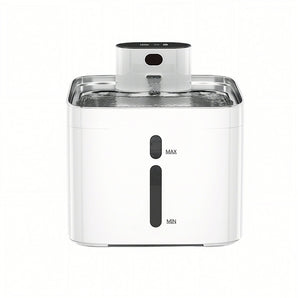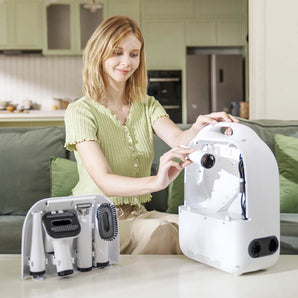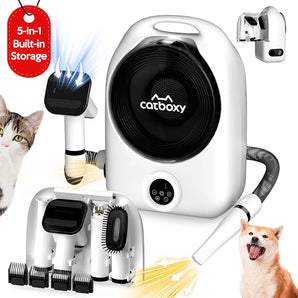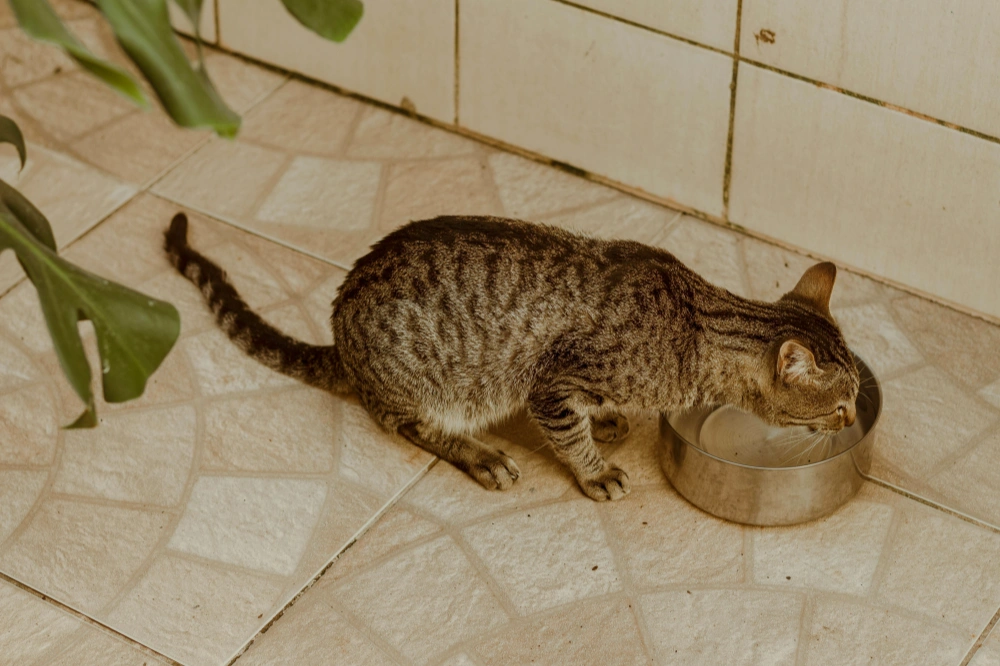
As cat parents, we all know how picky our feline friends can be about food, toys, and especially water. Cats are notoriously poor drinkers, and dehydration can lead to urinary tract issues and kidney problems. That’s why many pet owners turn to a pet water fountain to encourage their cats to drink more. Flowing water tastes fresher, looks more enticing, and keeps your cat healthier in the long run.
But here comes a common question: Are plastic or metal water fountains better for cats? Each material has its strengths and drawbacks, and the choice you make will affect not only your cat’s health but also your own cleaning routine. Let’s dive into the pros and cons of each option, and explore whether a hybrid design might actually be the best solution.
Plastic Pet Water Fountains: Affordable and Lightweight
Plastic cat fountains are widely available and often the go-to choice for first-time buyers. They are generally:
Advantages of Plastic:
-
Budget-friendly – Plastic fountains are usually cheaper, making them accessible for pet parents who want to try one without spending too much.
-
Lightweight and portable – Easy to move around the house or take along when traveling.
-
Colorful designs – Many come in fun colors and shapes that can match your home style.
Disadvantages of Plastic:
-
Scratches easily – Even mild wear and tear can create small scratches where bacteria can grow. Over time, this makes cleaning less effective.
-
Odor retention – Plastic can absorb smells, which may make water taste less appealing to sensitive cats.
-
Feline acne risk – Some cats develop chin acne due to prolonged contact with plastic surfaces.
While plastic fountains may be a practical starter choice, they often need more frequent replacement and stricter cleaning to keep them safe.
Stainless Steel Pet Water Fountains: Durable and Hygienic
Stainless steel is the premium choice for many cat owners who prioritize hygiene. A metal water fountain has clear advantages:
Advantages of Stainless Steel:
-
Hygienic surface – Resistant to scratches and bacterial buildup, helping keep the water cleaner for longer.
-
Easy to clean – Most parts are dishwasher-safe, saving you time and effort.
-
Durability – Strong and long-lasting, often outlasting plastic models by years.
-
Neutral look – Blends easily into modern kitchens or living rooms.
Disadvantages of Stainless Steel:
-
Heavier – Not as easy to move around, especially when filled with water.
-
Higher price tag – The upfront cost is usually higher than plastic models.
-
Fewer style options – Typically limited to sleek silver finishes.
If your cat is prone to chin acne or you prefer something that will last for years, stainless steel is often the winner.
Hygiene and Cat Health: Why Material Matters
When it comes to pet water fountains, hygiene is one of the most important considerations. Cats are sensitive to odors, and any lingering smell or bacterial growth can discourage them from drinking.
-
Plastic can trap bacteria in scratches, which may lead to health issues if not cleaned properly.
-
Stainless steel resists bacterial buildup and keeps water fresher.
Cats who already struggle with acne or skin sensitivity usually do better with stainless steel. Plus, water simply tastes fresher when stored in a clean, non-porous container.
A Balanced Choice: Hybrid Pet Water Fountains
For cat parents who don’t want to compromise, hybrid designs combine the best of both materials.
💡 Featured Product: Catboxy Hydra Pet Fountain
If you’re wondering whether to choose plastic or metal, why not get the advantages of both? The Hydra Pet Fountain is designed with a 304 stainless steel water tray where your cat drinks, ensuring maximum hygiene and safety. The rest of the fountain is made from lightweight, food-grade PC material, which keeps the unit easy to handle and visually modern.
This hybrid approach solves the common dilemma between plastic and stainless steel. Cats drink from a safe, scratch-resistant metal surface, while owners enjoy a fountain that is durable, lightweight, and stylish. Hydra also makes cleaning simple, reducing the hassle of daily maintenance.
Maintenance and Cleaning Tips
No matter which material you choose, cleaning is non-negotiable. A pet water fountain should be emptied and washed every few days, with filters replaced as recommended by the manufacturer.
-
Plastic models need extra care to prevent scratches and bacterial buildup. Use soft sponges rather than abrasive brushes.
-
Stainless steel models are easier to scrub and often safe for dishwashers, saving time.
-
Hybrid models like Hydra strike a balance—easy cleaning combined with hygienic drinking surfaces.
Cost vs. Value
When comparing plastic vs. metal cat water fountains, cost is often the deciding factor.
-
Plastic: Lower initial price, but may need frequent replacement.
-
Stainless steel: Higher upfront cost, but lasts longer and saves money in the long run.
-
Hybrid designs like Hydra: Mid-range pricing, but provide the best mix of durability, hygiene, and user-friendly design.
Which Fountain Is Right for You?
Choosing the right pet water fountain depends on your priorities:
-
Go with plastic if you’re budget-conscious and want something lightweight and colorful.
-
Choose stainless steel if you want maximum hygiene, durability, and minimal health risks.
-
Opt for a hybrid fountain like Hydra if you want the perfect balance—hygienic drinking surfaces for your cat and easy maintenance for yourself.
Conclusion
So, are plastic or metal water fountains better for cats? The answer depends on your budget, cleaning habits, and your cat’s health needs. Plastic is affordable but requires diligent cleaning, while stainless steel is a hygienic, long-term solution.
However, modern designs like the Catboxy Hydra Pet Fountain show that you don’t always have to choose one over the other. By combining a stainless steel drinking tray with a lightweight PC body, Hydra provides fresh, safe water for your cat while keeping things simple for you.
In the end, the best pet water fountain is the one that keeps your cat drinking happily every day—and makes your life easier, too.






